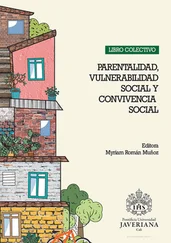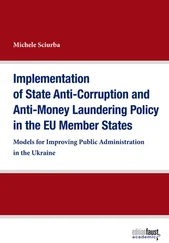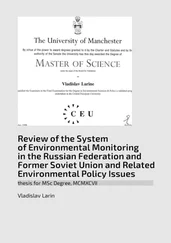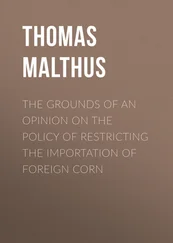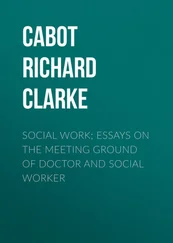Other critiques – particularly around racism, ethnicity and migration but also around disability, sexuality and gender diversity – were less amenable to the conceptual parameters and quantitative measures of this new cross-national development. Because of this, cross-national comparative studies in these areas were late to the table, mainly emerging some two decades later – immigration regimes (Sainsbury 2012); intimacy (Roseneil et al. 2020); disability (Halvorsen et al. 2017); old age (Walker 2005); transgender (Hines et al. 2018). Lack of quantitative data was a real problem, as many European countries had not by this time instituted the collection of data on ethnicity or sexuality. It was also the case that welfare regime analysis was at first slow to acknowledge those countries that didn’t fit with US or European modern welfare state development, such as the paradoxes of post-communist societies (Deacon and Castle-Kanerova 1992) and the rapid changes in Latin America (Gough et al. 2004; Franzoni 2008) and parts of South-east Asia (Peng and Wong 2008). It was also in relation to some of these studies that the geo-politics and colonialism between North and South began to be recognized as a factor in welfare state development (Midgley and Piachaud 2011), but this had less impact on the rolling forward of welfare regime analysis.
In relation to racism, in the mid-1990s many European countries saw a rise in migration and multiculturalism as well as an emerging political and popular backlash to these, often expressed as claims for new nationalist conditions of eligibility to welfare (‘welfare chauvinism’ – Keskinen et al. 2016). Cross-national analyses of migration and citizenship regimes were being developed by migration and racism scholars (Bovenkerk et al. 1990; Brubaker 1990; Hammar 1990). With some exceptions (Castles and Miller 1993; Faist 1995; Sainsbury 2012), these were largely outside the discipline of social policy and, even so, did not always relate migration to race and racism. Criminal justice, too, in which much critical work around racism had been developed, such as Policing the Crisis (Hall et al. 1978), often stood outside the discipline. Other exceptions at that time also included more intersectional approaches to the gendering, racializing and classing of welfare states (Mink 1990; Ginsburg 1992; Boris 1995; Williams 1995) and the beginning of research on the significance of female migration into care work (Heyzer et al. 1994; Anderson 2000). None of these touched the body of comparative social policy at that time. In fact they were largely ignored. A vacuum opened up in the core of the discipline, one often excused through lack of data, but it was as much that there was no theoretical space for the new-old hierarchies of postcolonial and geo-political realities. The increased pace and differentiation of migration and asylum seeking was beginning to challenge myths of cultural homogeneity and the realities of national boundaries upon which nation-states and their social policies were built. In addition, when the inadequacy of existing immigration policies and social rights was becoming apparent, and when welfare chauvinism was becoming more assertive, few mainstream welfare state/regime analyses were elaborating theoretically or normatively how to counteract racism and racial inequalities or to deconstruct universalism’s failure to recognize difference (but see Phillimore et al. 2021 for a cross-national study that does just this, discussed in chapter 5).
These omissions were carried in different ways into the next waves of mainstream social policy, which focused upon the restructuring of welfare states in the context of the rise of neoliberalism. Three examples offer an understanding of the narrow ways in which gender and race (by now well established in wider scholarship) began to be acknowledged. First, the historical institutionalist approach was a particularly important contribution to understanding how the contingency of history and the architecture of political institutions matter in the way they shape political claims and political change (Hall 1993; Pierson 1996; Pierson and Skocpol 2002). This was more open to referencing different inequalities, but what was missing was any systematic engagement with the multiple social relations of gender, race or any salient relations other than class. Second, this openness but eventual narrowness can also be seen in other work on the restructuring of welfare states which uses the conceptual device of ‘new social risks’ (Bonoli 2007). This refers to the changes that challenged the post-war welfare state: greater female labour-force participation, an ageing society and an increase in single parents, as well as new vulnerable ‘risk groups’ which included migrants and disabled people. While this formulation acknowledged these groups and the challenges they pose, it tended to focus on the relationship they have to the labour market, as human capital, and to strip them of any claims they might make in their own right, as well as the more profound implications of those claims. Third, and similarly, in subsequent research on the impact of post-industrialism on welfare states, Esping-Andersen (1999) employed ‘family’, in addition to state and market, as an analytical concept and recommended moving domestic care work from the household to the state or market as the strategy to enable women to enter paid employment. Such investment would increase fertility, secure a tax base and productivity for the future, and protect and provide opportunities for the low-paid and unemployed (see also Esping-Andersen 2009). While the acknowledgement of social provision to enable women to work was welcome, this utilitarian and heteronormative approach ignores the wider aspects of gender equality such as the unequal gendering of household and care work, not to mention the shaping of these by class, migration and race, disability, age, and sexuality.
A second factor that inhibited the influence of the critiques was in the response to the intellectual shift across the social sciences and humanities to post-structuralist thinking. This was challenging to a discipline rooted in the analysis and measurement of structural inequalities and material poverty. The unfolding analyses of governmentalities, following Foucault, spawned a literature on how the restructuring of the (welfare) state marked a shift in how the behaviour of welfare subjects was to be managed (Rose 1999; O’Brien and Penna 1998). In addition, following Butler (1990), the connections between culture, subjectivity, identity, agency and difference began to be explored. These developments furthered an understanding of the complexity of power, but, for some in and out of social policy, questions of difference and the ‘politics of identity’ were (and still are) characterized as a culturalist shift away from the ‘real’ material struggle around the growing impoverishment and disempowerment of deindustrialized communities (Gitlin 1995). The separation of economic from other forms of injustice is a reflection of an ongoing current in ‘left’ politics of assuming that solidarity based on (working-)class interests constitutes the central force for change (Dean and Maiguashca 2018). In their study of minority ethnic women’s struggles against austerity in France, England and Scotland, Leah Bassel and Akwugu Emejulu (2018) found that the entreaties to solidarity from socialist and social democratic organizations were often implicitly made in economic terms to a white male constituency and thus provided little engagement with issues of racism or sexism. The idea of race as exogenous to class was to come back to bite during the Brexit campaign (see chapter 4). Back in the critical quarters of social policy, far from ignoring economic polarization, this shift offered opportunities to grapple with the way cultural and economic inequalities were complexly intertwined, as, for example, in John Clarke’s examination of what the ‘cultural turn’ means for the study of welfare states (Clarke 2004; see also O’Brien and Penna 1998; and Lister 2004). It was (and is) still the case, however, that many contemporary and influential studies focus exclusively on material inequalities, a tendency reinforced by the clear polarizing of inequalities emerging from the 2000s. Thus, in Thomas Piketty’s analysis of the inequalities of capitalism, powerful and influential as it is, there are no references in the index to gender, ethnic, minority, migrant or disabled inequalities (Piketty 2014). 2
Читать дальше


